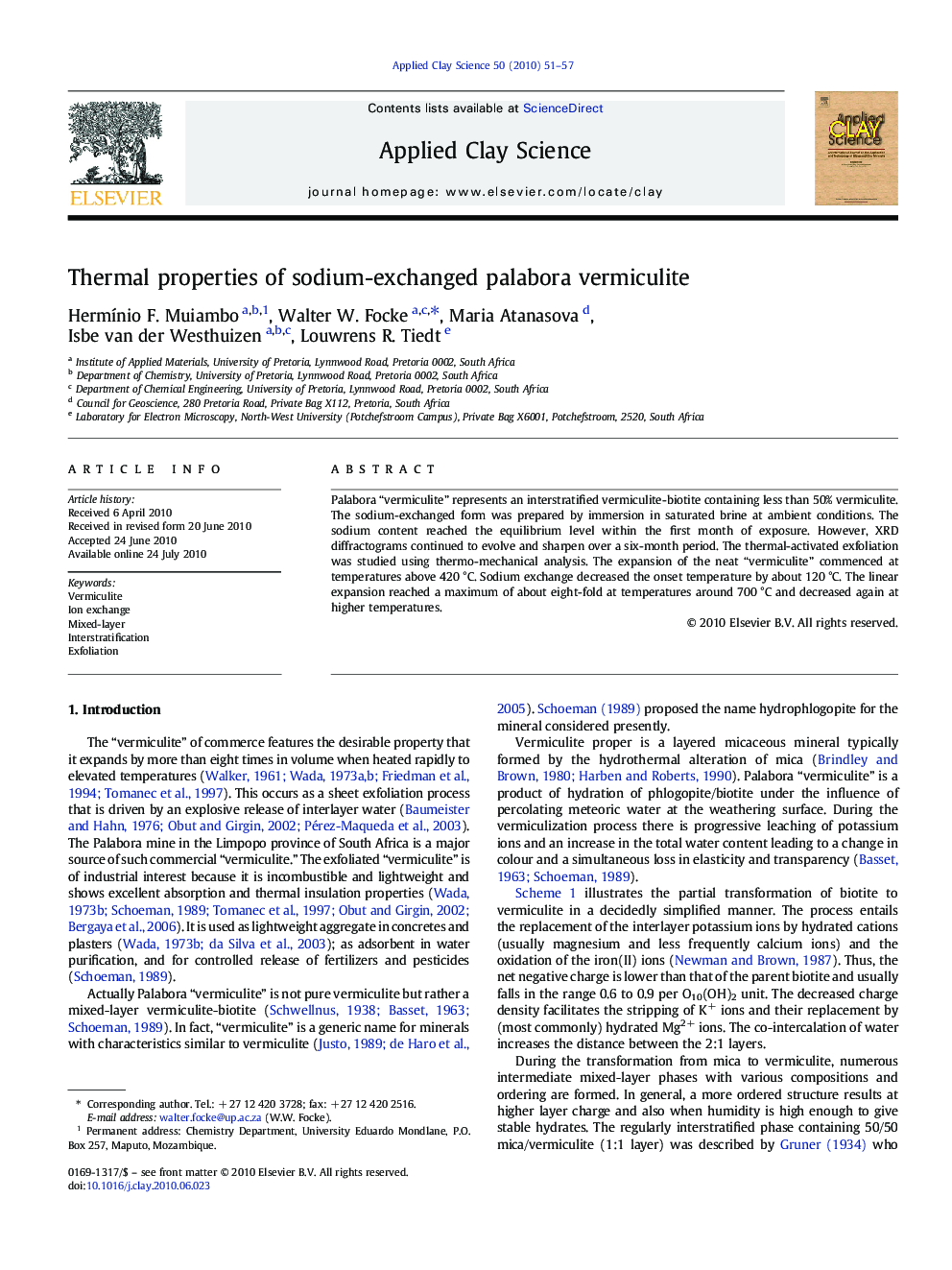| Article ID | Journal | Published Year | Pages | File Type |
|---|---|---|---|---|
| 1695704 | Applied Clay Science | 2010 | 7 Pages |
Palabora “vermiculite” represents an interstratified vermiculite-biotite containing less than 50% vermiculite. The sodium-exchanged form was prepared by immersion in saturated brine at ambient conditions. The sodium content reached the equilibrium level within the first month of exposure. However, XRD diffractograms continued to evolve and sharpen over a six-month period. The thermal-activated exfoliation was studied using thermo-mechanical analysis. The expansion of the neat “vermiculite” commenced at temperatures above 420 °C. Sodium exchange decreased the onset temperature by about 120 °C. The linear expansion reached a maximum of about eight-fold at temperatures around 700 °C and decreased again at higher temperatures.
Research highlights►Thermal expansion of Palabora is conveniently characterized by thermo-mechanical analysis. ►Rapid expansion commences above 420 °C. ►Sodium exchange lowers the expansion onset by 420 °C. ►Sodium-vermiculite also adsorbs more CO2 from the atmosphere.
